What is left of the Gulag
Notorious period from 1930 to 1950 in the history of the USSR entered bloody ink. October 1, 1930 was established by the Gulag - General Directorate of camps. Throughout all the republics of the Soviet Union had a gulag labor camps network, which for the period 1930-1953 gg. visited by about 6, 5 million people. Unable to withstand the inhuman conditions there died about 1, 6 million people.
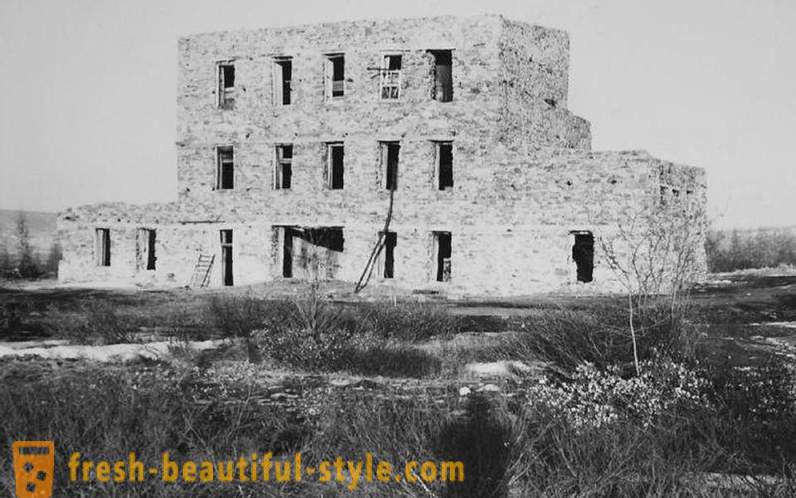
The prisoners are not just serving their sentences - their work is used for the benefit of the Soviet Union and was seen as an economic resource. Gulag prisoners were built a number of industrial and transport facilities. With the death of the "leader of all peoples" Comrade Stalin, the Gulag camps in fairly rapid pace began to abolish. Survivors sought rather to leave their places of detention, the camp deserted and dilapidated, and the projects that had been thrown so many human lives, quickly fell into decay. But the map of the former Soviet Union can still be face to face with the evidence of that era.
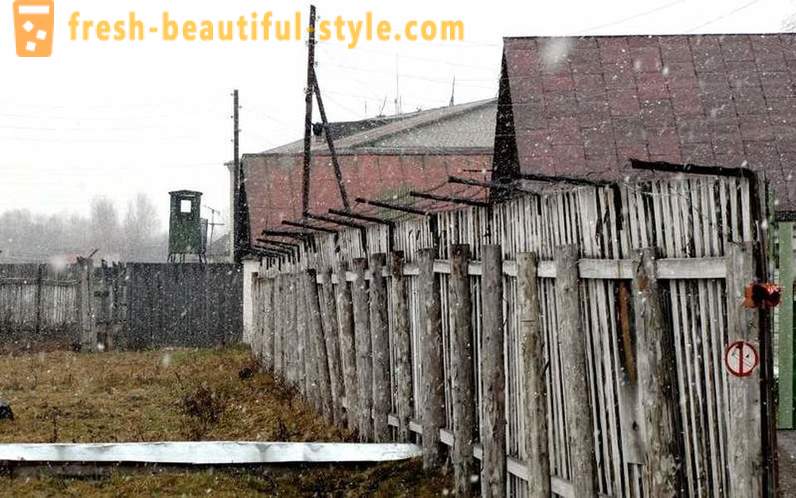
Perm 36
The former camp, situated near the city of Perm. Currently, the correctional labor colony of strict regime for those convicted of "especially dangerous crimes against the state" turned into a museum - Memorial Museum of History of Political Repressions "Perm 36". Barracks, towers, signal-alarm installations and utilities have been restored and are re-created.

Solovki
Solovki Special Purpose Camp (SLON) was the first and most famous camp in the Soviet Union. It was located in the White Sea, the archipelago of the Solovetsky Islands and quickly became a symbol of the repressive system. ELEPHANT finished its existence in 1937 - 20 years after Solovki was several tens of thousands of prisoners. Apart from the "political" in the archipelago massively exiled common criminals and the clergy. Now the island is only a monastery, which has carefully restored in recent years.

Dnipro mine
Dnipro mine is in Kolyma, only three hundred kilometers from Magadan. When the 20-ies on the Kolyma discovered rich deposits of gold, here we began to massively deport the prisoners. In sub-zero weather (in winter the thermometer drops below -50? C) "traitors" was mined at the mine tin using picks, shovels and crowbars. In addition to Soviet citizens in the camp were also Finnish, Japanese, Greeks, Hungarians and Serbs.

Dead Road
Construction of the railway along the Arctic Circle Salekhard-Igarka was one of the most ambitious projects of the Gulag. The idea of building belonged to Stalin himself: "It is necessary to take on the North, the North Siberia undisguised, but the political situation is very dangerous." Despite the harsh weather conditions: extreme cold and swamps teeming with mosquitoes, the road was constructed rapidly - began construction in 1947, already in 1953 800 km of the projected 1482 km has been laid. In 1953, after Stalin's death, it was decided to mothball construction. Throughout it remained abandoned locomotives, the empty barracks and thousands of dead builders from among the prisoners.
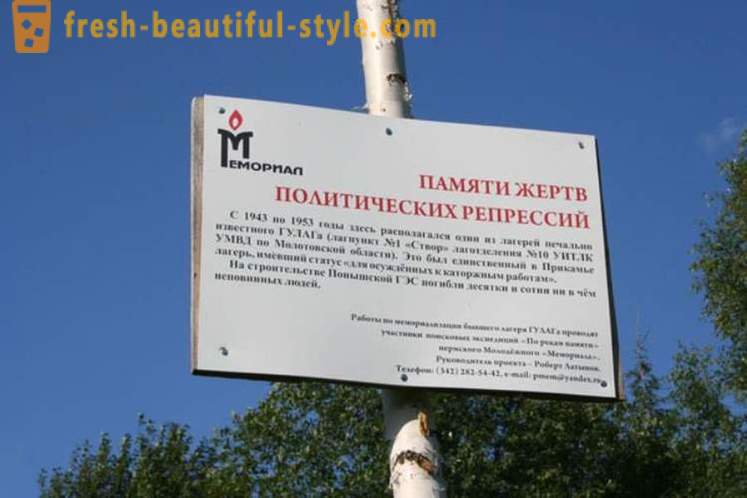
Vasilievka
Camp "Vasilievka" in Aldan District was one of the largest. Five thousand men, sentenced to 25 years for criminal and political charges, have been busy here in mining of monazite (a mineral containing uranium-235) and logging. A distinctive feature of the camp was hard, even for LUGaga camps discipline: for attempting to escape prison was sentenced to capital punishment - death. The prisoners lived in complete isolation from the outside world, as they were denied even the right to correspondence. On the territory of the former camp, officially closed in the 54th year, two crosses were established in memory of the victims of Stalinist repression.
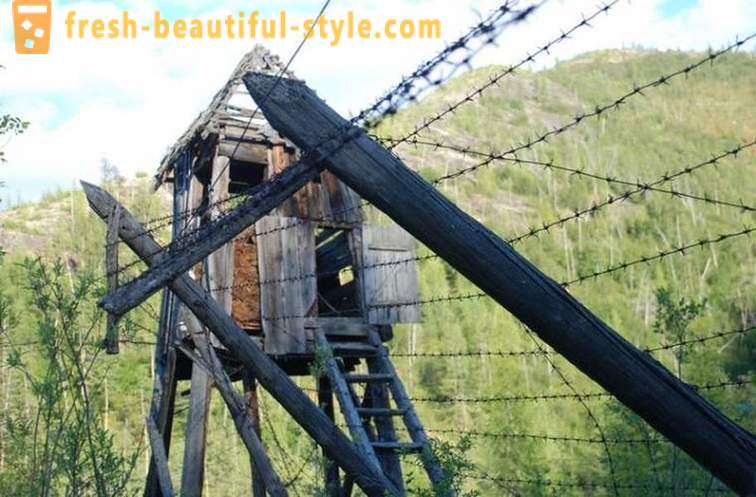
Stvor
Camp "Stvor" on the Chusovaya River shore, 20 km from the town of Chusovoy emerged in late 1942. Forces prisoners to the river was to grow Ponyshskaya HPP. Thousands of people, mostly convicted under the infamous Article 58, cleared the bed of the future reservoir, cut wood and coal was mined from the mines. Hundreds died, unable to withstand the intense pace of work - plans to build a hydroelectric power station in just two years. But in 1944, all the works have preserved - the dam was never built. Toward the end of World War II and after the camp was the "screening and filtration." It sent soldiers passed through the Nazi captivity.

Surmog
Main camp on the site of the eponymous village, located on the banks of the River Wilderness Vilva where to send the exiles from the Baltic Republics. It is noteworthy that they are not regarded as political prisoners before 1941, and had the status of persons "displaced". In Surmoge were many well-known representatives of the Social Democratic and Democratic parties, members of the government of Latvia. Among them, Mr. Landau - known journalist, leader of the Cadet Party Latvia and Khariton - the father of the "father of the atomic bomb" Yu Khariton, editor of the Riga newspaper "Today." Today at the site of the camp is a penal colony.
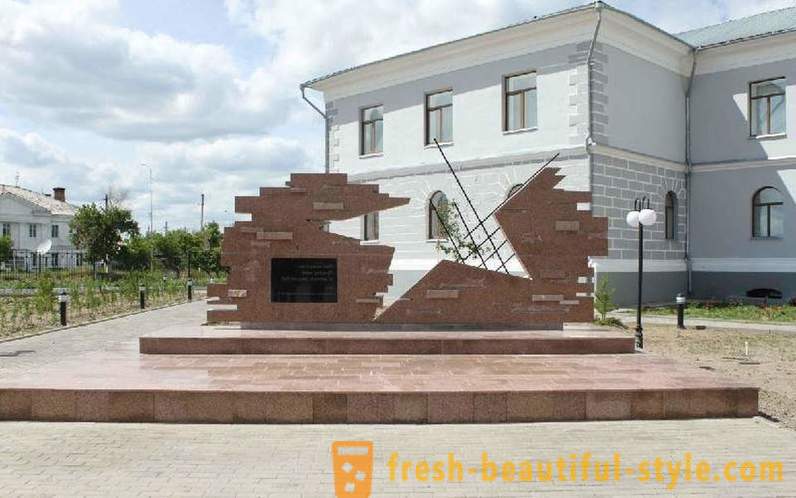
The camp at Mount Toratau
Salavat system Gulag camps in Bashkiria included 10 camps and camp at Mount Toratau was the worst of them all. Prisoners numb with terror only when one of its mention. Three thousand prisoners, shackles with which the never filmed, was mined here and burned limestone. Mountain water flooded the barracks of prisoners, turning their lives into hell, and people were dying not only from hunger, cold and disease, but also to killing each other. We buried them in the same place, near the limestone mines. In May 1953, the camp was abolished, but seems to have survived to this day the prisoners at that time was quite a bit.

KarLag
Karaganda labor camp - one of the largest camps - existed from 1930 to 1959. and submitted Gulag NKVD. On the territory there are seven separate settlements with the European population - more than 20 thousand people. Currently, in the former building of the Office of KarLag camps in the village of Dolinka is located Museum of memory of victims of political repression.
The road of bones
Notorious abandoned trail that leads from Magadan to Yakutsk. The road began to build in 1932. Tens of thousands of people participated in the laying of tracks and dead there, buried just beneath the roadway. For this reason the tract and was nicknamed "the road to the bones." Camp along the route called on kilometer point. Just a "road of bones" was about 800 thousand people. With the construction of "Kolyma" old federal highway Kolyma tract was in decline, and today is in a derelict state.













































